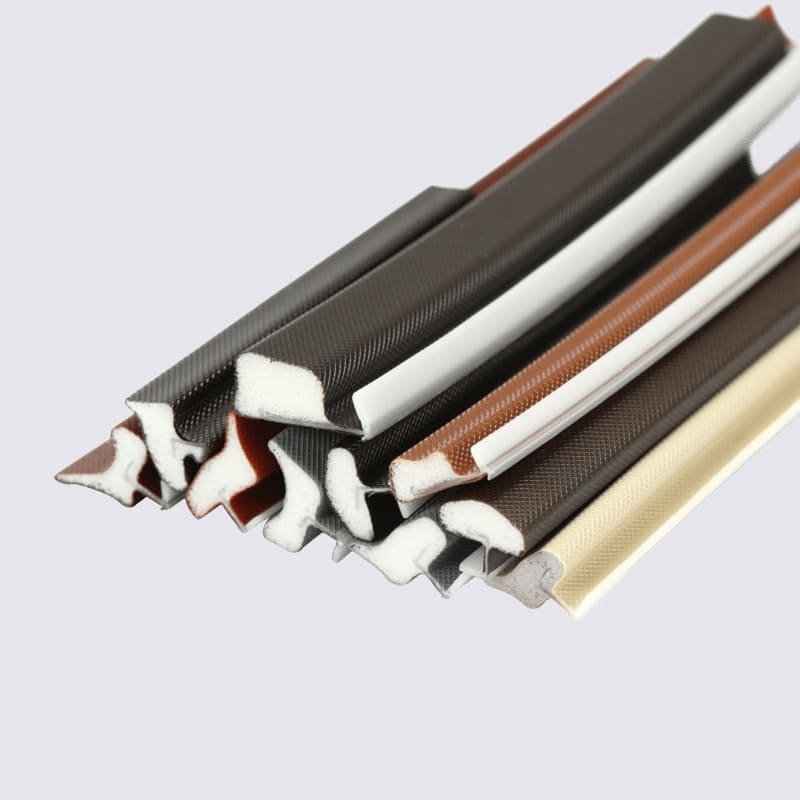Weatherstripping your windows is a must if you want to keep your home energy-efficient and comfortable. When there are gaps in your windows, it can cause your heating and cooling costs to skyrocket. That’s why it’s so important to seal those gaps the right way. When you install the right weatherstripping, you can reduce energy loss, save money, and increase the comfort level of your home.
To weatherstrip windows, inspect and clean window parts, install foam tape and vinyl “V” strips, and use shrink-film window insulation. This will seal gaps, prevent air leaks, and improve energy efficiency.
Let’s talk about the different types of weatherstripping and how to choose the right one for your windows.
What type of weather stripping is best for windows?
The V-strip (tension seal) is one of the best weatherstripping options for windows. Shaped like a V, it creates a tight seal by pressing against the sides of a crack. V-strips work well with double-hung or sliding windows, the tops and sides of doors, and other flat, smooth surfaces.
What is the best way to weather-seal windows?
Caulk is a very effective and popular way to insulate windows. By filling in any visible gaps or cracks, caulk keeps unwanted air from coming in or going out. It’s best to apply caulk both inside and outside your window for the best results. This double application makes sure all possible air leaks are sealed, giving you better insulation and saving you money on energy.
How do you choose the right weather stripping?
Choosing the right weatherstripping involves considering the friction, καιρός, temperature changes, and wear and tear associated with its location. For instance, weatherstripping applied to a door bottom or threshold should be durable enough to withstand constant foot traffic and potential abrasion from carpets. Assessing these factors ensures that the weatherstripping you select will be effective and last.
Is foam or rubber weather stripping better?
Foam and rubber weatherstripping both have their pluses:
Sponge Tape: Made from closed-cell PVC sponge material, sponge tape is more resistant to wear and tear. It’s a great option for areas with moderate friction and is relatively easy to install.
Rubber Tape: Made from EPDM rubber, this type of weatherstripping is more resistant to wear and tear and remains flexible in extreme temperatures. Rubber tape is ideal for areas with significant temperature fluctuations and high friction.
How to install weather stripping on sliding windows?
Installing weather stripping on sliding windows is a fairly simple process. Δείτε πώς να το κάνετε:
Clean the Tracks: Make sure the tracks where the weather stripping will go are clean and free of debris.
Measure and Cut: Measure the length of the window tracks and cut the weather stripping to fit.
Apply the Weather Stripping: Peel off the backing and press the weather stripping firmly in place along the tracks.
Test the Window: Slide the window back and forth to make sure it operates smoothly and the weather stripping is in the right place.
Types of window weather stripping
There are several types of weather stripping suitable for windows, συμπεριλαμβανομένου:
Foam Tape: Easy to install and great for odd-shaped spaces.
V Strip (Tension Seal): Good for sealing the sides of double-hung or sliding windows.
Felt: A cheap option, but not as durable as foam or rubber.
Tubular Rubber and Vinyl: Provide a tight seal and are good for large gaps.
Exterior window weather stripping
For windows that will be exposed to the elements, you’ll want to use a non-porous, water-resistant weather stripping. Closed-cell foam and rubber weather stripping are both great choices for exterior applications. These materials resist moisture and provide a long-lasting seal against wind and rain.
How to install foam weather stripping around windows
Installing foam weather stripping around windows is a simple process:
Καθαρίστε την επιφάνεια: Make sure the window frame is clean and dry.
Measure and Cut: Cut the foam tape to the length you need.
Peel and Stick: Peel off the backing and press the foam tape firmly in place along the window frame.
Check for Gaps: Make sure there are no gaps and that the foam tape is stuck down well.
V-channel weatherstripping for windows
V-channel weatherstripping is perfect for double-hung and sliding windows. It fits into the grooves of the window sash and creates a tight seal. It is pliable and can move with the window, keeping drafts at bay.
Window weather stripping replacement
Στο περασμα του χρονου, weather stripping can wear out and lose its effectiveness. Replacing old weather stripping involves:
Removing the Old Weather Stripping: Just peel off the old stuff.
Cleaning the Surface: Clean the window frame.
Applying New Weather Stripping: Cut and stick new weather stripping.
Best weather stripping for windows
The best weatherstripping for windows depends on what you need:
If you have windows that get a lot of wear and tear, go with rubber weatherstripping. It’s durable.
If you’re looking for something easy to install and that you don’t use a ton, go with foam tape.
If you want to seal up double-hung or sliding windows really well, use V-strip weatherstripping.
Περίληψη
Weatherstripping your windows is a simple and inexpensive way to improve energy efficiency and comfort in your home. By understanding the different types of weatherstripping and how to install them, you can choose the best solution for your windows. Take action today to seal your windows and enjoy the benefits of a draft-free home.



